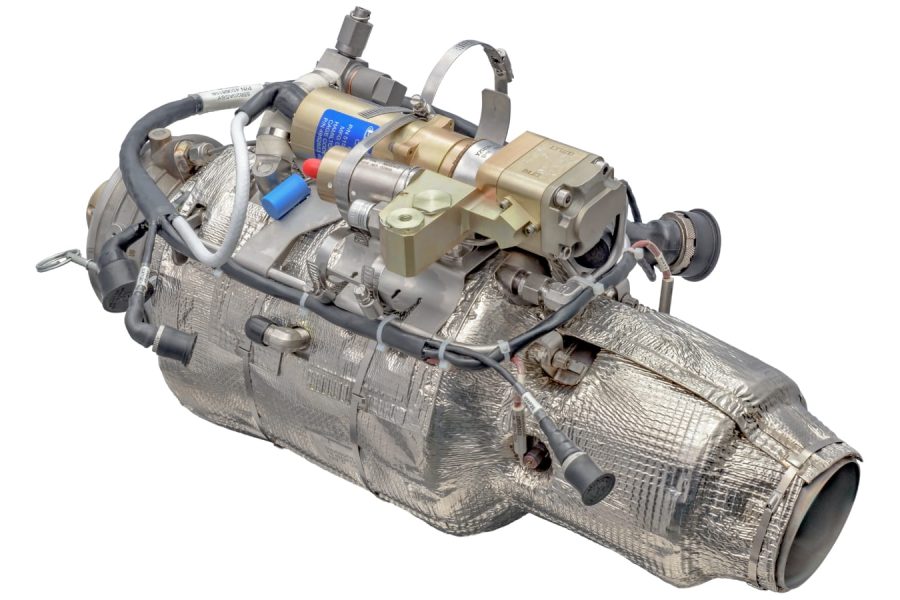RTX’s Pratt & Whitney unit is developing a new family of engines aimed at powering new low-cost cruise missiles, munitions, and Collaborative Combat Aircraft, company officials told reporters in a Sept. 15 briefing.
The new engine family, which has not yet been given a name, is “scalable” from 500 to 1,800 pounds of thrust, according to Jill Albertelli, president of Pratt’s military engines division. Testing is imminent and a further series is planned in 2026, she said.
“This new family of engines prioritizes development speed and affordability,” Albertelli said. “We’re using additive manufacturing so we can help work on cost, but also speed-to-market of this capability. So this scalable architecture and commonality will help us be able to really take lessons learned from one to another, but also to have it available for several different applications.”
The development is being done by the company’s “GATORWORKS” advanced projects team.
“The scalability of the architecture, the commonality across models, and the use of additive manufacturing will allow us to significantly reduce development and production timelines as we look at existing and future applications with customers,” she said.
She said initial testing is coming “later this year, and then … a second series of expected testing [will] run in early 2026 to validate some key designs, and this will be an engine family that will be available both domestically and internationally.”
Albertelli withheld most details about the engine but said it is “not the TJ150,” which powers for the Miniature Air-Launched Decoy and will be used by Leidos for a small cruise missile program. “It is something else that we have been working on for some time and are very excited about.”
Pratt is “seeing strong demand from both the services and international customers for CCAs, and we really have been able to provide solutions that we’re looking to field faster, again, moving at the speed of relevance,” she said.
GE Aerospace and Krators announced last year that they are partnered to develop a similarly scalable class of engines applicable to CCAs, loitering missiles, cruise missiles, and other small powered weapons. The GEK800 is in the 800 pounds of thrust class but can be powered up to 3,000 pounds of thrust.
Albertelli said airframe and munitions builders are looking for power options in “a spectrum or range,” she said, depending on their plans: “Is it something that they want to return and come back? Is it something that is actually deploying effects?”
“We really have studied this and worked with the customer to be able to provide to them [a solution] whichever way they go,” she said. “And it is really kind of different by service in what we’re seeing.”
The Air Force’s first increment of CCAs are entering flight testing, but the service has yet to define Increment 2 publicly, and “maybe the second one … has different requirements, but that’s why being able to utilize some commercial, off-the-shelf and being ready now with engines that exist could really shorten that timeline, to be able to field the different requirements and the different applications needed.”
Absent definitive parameters, “I don’t have a full solution on exactly what CCA is going to be. So we’re ready with a range of offerings for our customers.”


